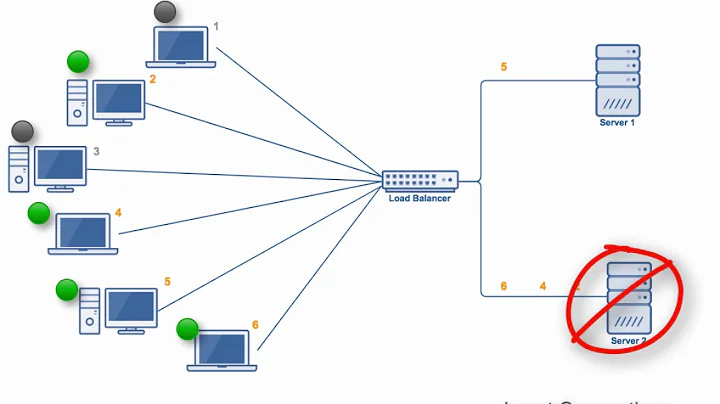What algorithm does Amazon ELB use to balance load?
Solution 1
It's request count based for HTTP(S), round robin for other.
Before a client sends a request to your load balancer, it first resolves the load balancer's domain name with the Domain Name System (DNS) servers. The DNS server uses DNS round robin to determine which load balancer node in a specific Availability Zone will receive the request.
The selected load balancer node then sends the request to healthy instances within the same Availability Zone. To determine the healthy instances, the load balancer node uses either the round robin (for TCP connections) or the least outstanding request (for HTTP/HTTPS connections) routing algorithm. The least outstanding request routing algorithm favors back-end instances with the fewest connections or outstanding requests.
Solution 2
It depends on the type of ELB used. AWS has over the time introduced Application ELB and Network ELB along with the Classic ELB.
Application Load Balancers applies listener rules and assigns the (HTTP/HTTPS) request to a target group. It selects a target from that target group using the round robin routing algorithm
Network Load Balancers node that receives the connection, selects a target from its target group using a flow hash routing algorithm
Classic Load Balancers uses round robin routing algorithm for TCP listeners and least outstanding requests routing algorithm for HTTP and HTTPS listeners
.
TLDR;
The modern ELBs use
round robin routing algorithmfor HTTP/HTTPS requests andflow hash routing algorithmfor TCP requests.Classic ELB used
round robin routing algorithmfor TCP requests andleast outstanding requests routing algorithmfor HTTP and HTTPS requests
Source / Further Reading : https://docs.aws.amazon.com/elasticloadbalancing/latest/userguide/how-elastic-load-balancing-works.html#routing-algorithm
Related videos on Youtube
kn330
student, teacher, geek, FOSS user/promoter, day-dreamer.
Updated on September 18, 2022Comments
-
kn330 over 1 year
I found this in the official ELB documentation
By default, a load balancer routes each request independently to the application instance with the smallest load.
but an article on Newvem says that ELB supports only Round Robin algorithm
Algorithms supported by Amazon ELB - Currently Amazon ELB only supports Round Robin (RR) and Session Sticky Algorithms.
So which one is it?
[1] http://docs.aws.amazon.com/ElasticLoadBalancing/latest/DeveloperGuide/US_StickySessions.html
-
ceejayoz over 10 yearsI'd go with the official docs over a year old, unsourced article on a random blog unless given a reason to believe otherwise. Do note, though, that "instance with the smallest load" would apply only to a particular zone - if you have one instance in zone A and two in zone B, the AWS console warns you that requests will be imbalanced.
-
kn330 over 10 years'Do note, though, that "instance with the smallest load" would apply only to a particular zone' < Is it mentioned in the official documentation somewhere?
-
ceejayoz over 10 yearsI'm sure it's mentioned somewhere, but it's definitely mentioned in the AWS console when you add instances to an ELB. Here's a screenshot: cl.ly/image/251m3g1b0E1n
-
-
muskaan sharma over 7 yearsThis information is slightly out of date. The load-balancer will only send the request to healthy instances within the same availability zone if the cross-zone feature is turned off. The default setting for the cross-zone feature is enabled, thus the load-balancer will send a request to any healthy instance registered to the load-balancer using least-outstanding requests for HTTP/HTTPS, and round-robin for TCP connections.
-
 Sumit Murari over 6 yearsHey @ColtonCat can you please link source for the info
Sumit Murari over 6 yearsHey @ColtonCat can you please link source for the info -
 Sumit Murari over 6 yearsReference for info is: docs.aws.amazon.com/elasticloadbalancing/latest/userguide/…
Sumit Murari over 6 yearsReference for info is: docs.aws.amazon.com/elasticloadbalancing/latest/userguide/…




